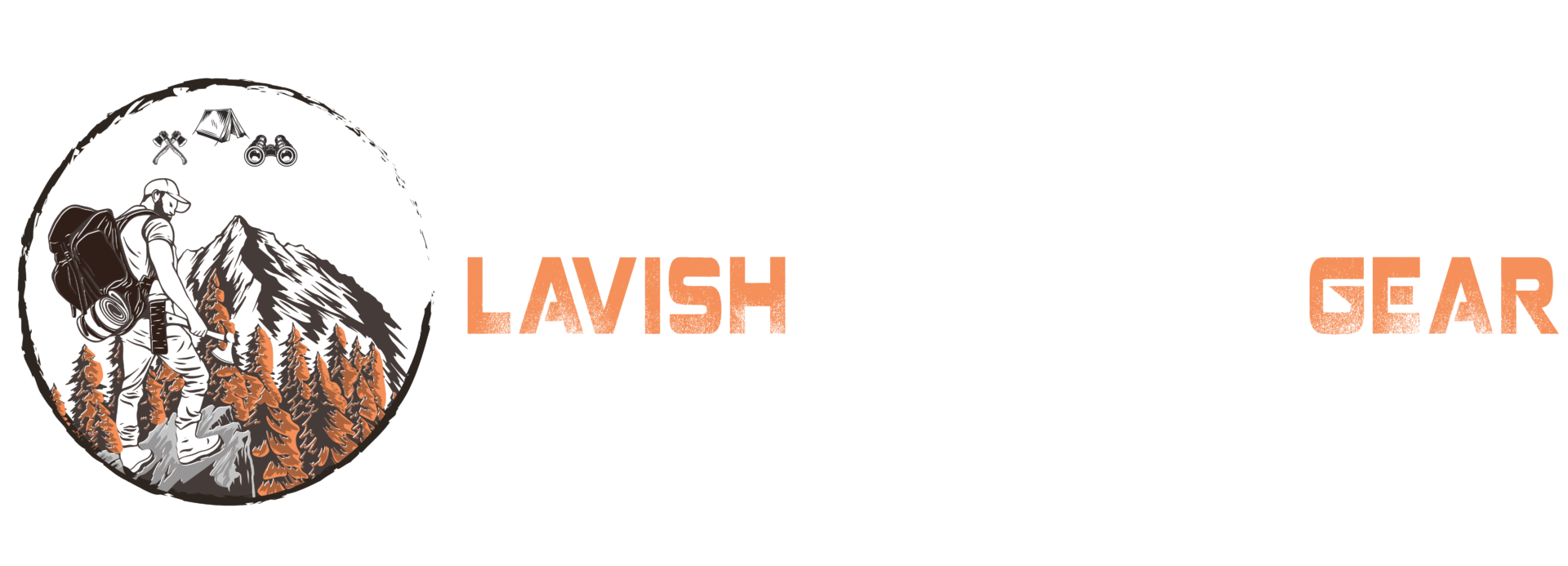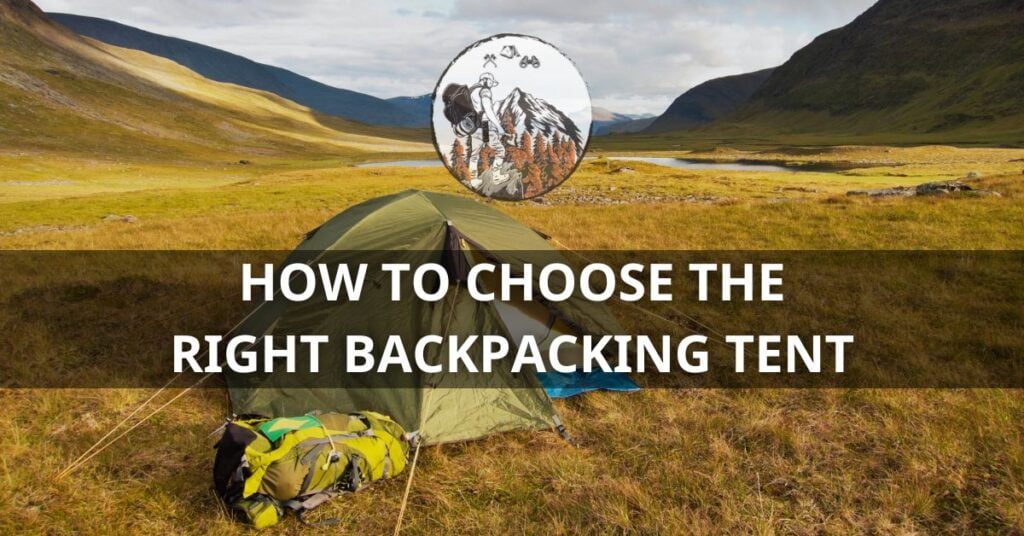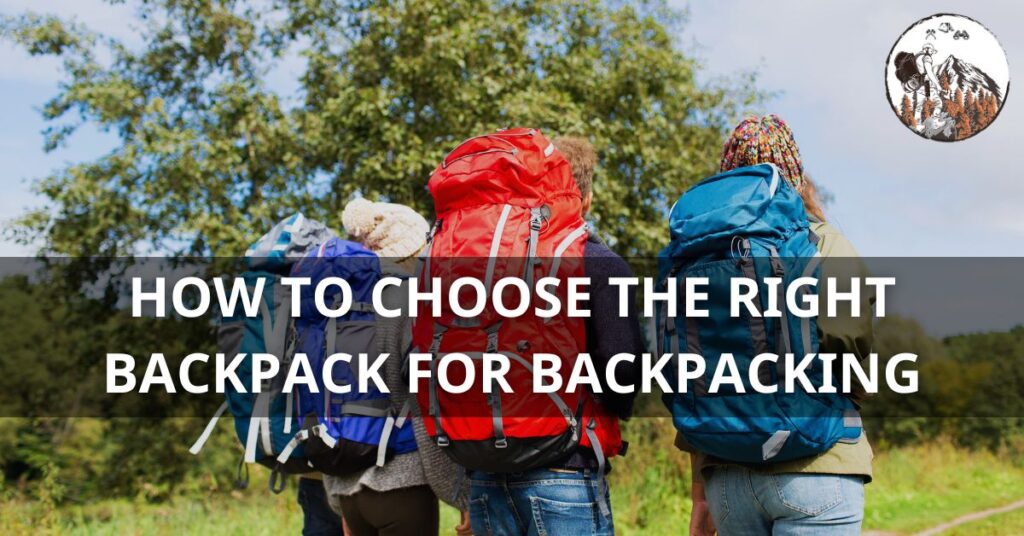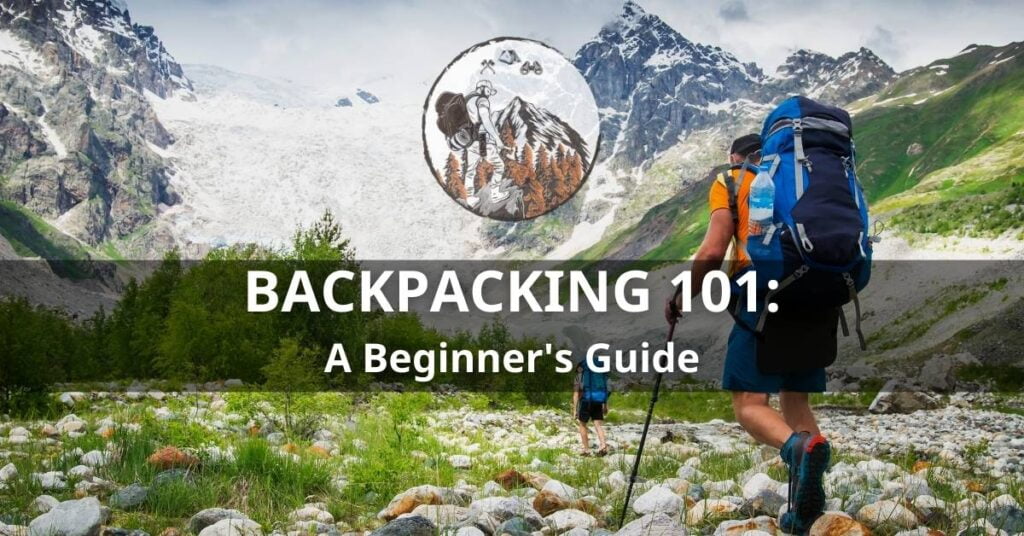Backpacking is a popular outdoor activity that requires trekking, hiking, and camping in remote and rugged locations. To fully enjoy the experience, it’s essential to have the right gear, especially when it comes to shelter. The selection of the right shelter is of paramount importance and knowing how to choose a tent for backpacking can significantly enhance your comfort and safety throughout the journey.
There are several factors you should consider when selecting a backpacking tent, including size, weight, durability, and weather resistance. In this guide, we’ll break down each of these factors to help you make an informed decision on which tent is best for your needs.
So, let’s explore “How to choose a tent for backpacking”
Table of Contents
Definition of Backpacking Tents
Backpacking tents are portable shelters designed for outdoor enthusiasts who travel on foot. They provide a safe and comfortable space for rest, sleep, and protection from the elements during multi-day hiking trips.
Importance of Selecting the Right Tent
Choosing the right tent is crucial for a successful backpacking trip. The perfect tent should protect you from harsh weather conditions, be lightweight enough for comfortable carrying, and provide ample space for occupants and gear. This blog post will guide you through the essential factors to consider when choosing a backpacking tent.
Understanding Your Backpacking Needs
Before diving into tent features and specifications, it’s important to understand your specific backpacking needs.
Trip Duration and Frequency
If you’re planning long treks or frequent backpacking trips, you’ll need a durable, high-quality tent that can withstand extended use.
Weather Conditions
Consider the typical weather conditions you’ll be backpacking in. Do you need protection from heavy rain, strong winds, or snow? Or will you mostly be camping in mild conditions?
Number of Occupants
Will you be backpacking solo, with a partner, or in a group? Remember, more occupants mean more space and weight considerations.
Weight Considerations
When backpacking, you carry all your gear on your back. Therefore, you’ll want to go as light as possible without compromising safety and comfort.
You can visit our detailed guide to “Backpacking Essentials and Needs” which contains information about the gear and tips for you.
Types of Backpacking Tents
Understanding the various types of backpacking tents on the market will help you decide which is best for your needs.

A. Single-Wall Tents
Single-wall tents have one layer of waterproof fabric. They’re lightweight and quick to set up but less breathable, which can lead to condensation inside the tent.
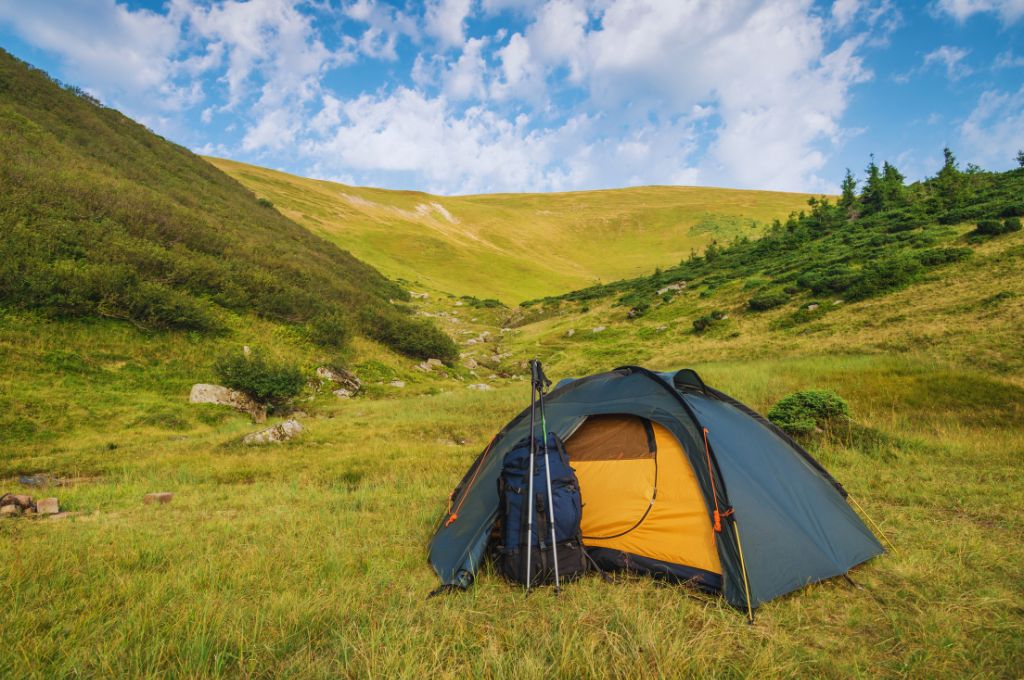
B. Double-Wall Tents
Double-wall tents have an inner tent covered by a waterproof rainfly. They are more breathable and offer excellent condensation management, but they’re heavier and require more setup time.
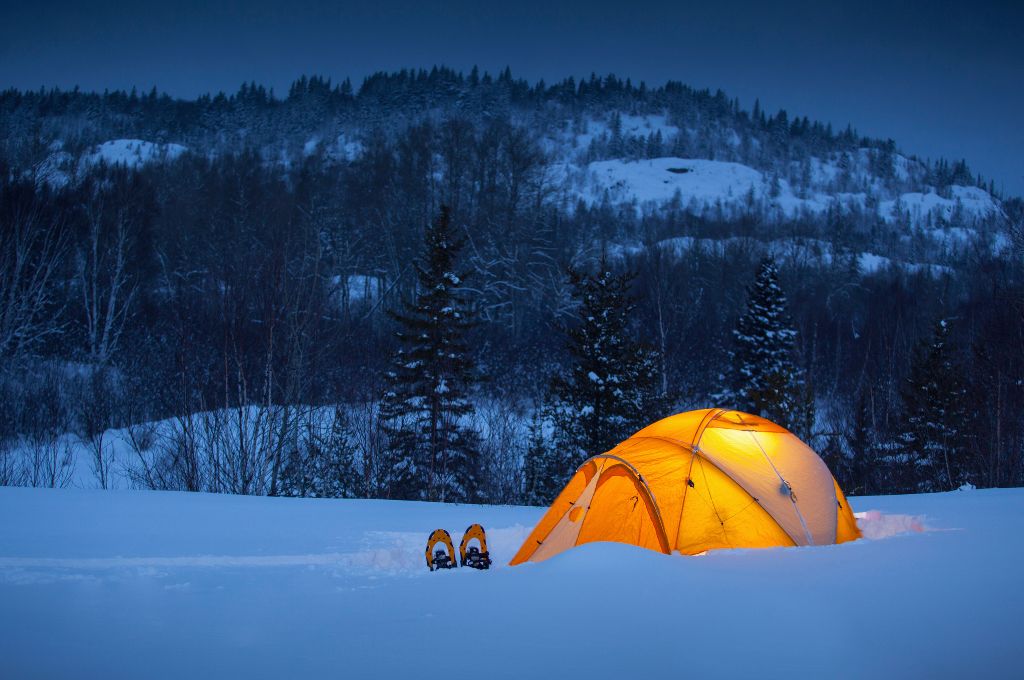
C. Four-Season Tents
Four-season tents are designed to withstand harsh weather conditions, including heavy snow and strong winds. They are usually heavier due to the robust materials used in their construction.

D. Ultralight Tents
Ultralight tents are designed for backpackers who prioritize weight reduction. They utilize lightweight materials and minimalist designs, but they often sacrifice durability and comfort.
Tent Capacity and Size
The capacity and size of your tent should be based on the number of occupants and the amount of gear you’ll be carrying.
Determining Appropriate Size
As a rule of thumb, choose a tent capacity that matches your group size. However, if you prefer more space or have a lot of gear, consider sizing up.
Weight vs. Space Trade-off
Remember, more space often means more weight. Find a balance that works for your comfort level and backpacking needs.
Interior Features for Comfort
Look for features like mesh pockets for organization, loops for hanging lanterns, and vents for condensation management. These small details can significantly enhance your camping experience.
Weather Resistance and Season Ratings
Your tent should protect you from the elements. Here’s what to consider:
Waterproofing and Seams
Ensure the tent and rainfly have a high waterproof rating and that the seams are well-sealed to prevent leaks.
Wind Resistance
Check the tent’s wind resistance. Look for strong poles, aerodynamic shapes, and secure guyline points.
Temperature Rating
While most tents don’t have a temperature rating, a four-season tent will offer better insulation and wind protection in colder conditions.
Tent Poles and Structure
The structure of a tent determines its stability, strength, and setup difficulty.
Materials and Durability
Aluminum poles are common due to their balance of strength and weight. Higher-end tents might use carbon fiber for an even lighter weight.
Freestanding vs. Non-Freestanding Tents
Freestanding tents can stand up without the need for stakes, allowing them to be moved easily. Non-freestanding tents require stakes and guylines for structure, making them lighter but less versatile.
Pole Configuration
A simple pole configuration will make the tent easier to set up and take down. Dome tents with two crossing poles are straightforward and provide good stability.
Tent Fabrics
The tent’s fabric affects its weight, durability, and weather resistance.
Breathability
Choose a tent with breathable fabric to prevent condensation buildup. Many tents use a combination of solid fabric for privacy and durability and mesh for ventilation.
Durability of Materials
The fabric’s denier (D) can give you an idea of its durability—the higher the number, the thicker and more durable the fabric. However, a higher denier also means more weight.
UV Resistance
Prolonged exposure to the sun can damage tent fabric. If you’re camping in sunny conditions, consider a tent with good UV resistance.
Ventilation Strategies
Good ventilation is key to managing condensation and maintaining a comfortable atmosphere inside your tent.
Importance of Ventilation
Poor ventilation can lead to a build-up of moisture inside your tent, making the interior damp and uncomfortable.
Vent Placement and Design
Look for tents with multiple vents, ideally adjustable ones that allow you to control airflow. Mesh panels in the tent’s canopy can also help with ventilation.
Condensation Management
Single-wall tents and cold weather can lead to more condensation. Ventilation helps, but sometimes additional strategies, like using a tent with a condensation barrier or wiping down the walls, might be necessary.
Ease of Setup and Portability
Your tent should be easy to set up and transport.
Number of Poles and Attachments
Fewer poles mean faster setup, but potentially less stability. Color-coded poles and attachments can make the process easier.
Color-Coding and Setup Complexity
Some tents have color-coded corners and poles for easier setup. Others might use clips instead of pole sleeves for faster and easier pitching.
Packability and Size
Consider how small the tent packs down and its packed shape and size. A compact, cylindrical shape is typically easier to fit into a backpack.
Additional Features
Consider additional features for increased functionality.
Vestibules and Storage
Vestibules offer extra storage space outside the tent body, while interior pockets and gear lofts help keep your gear organized inside the tent.
Interior Pockets and Gear Loops
Interior pockets and gear loops provide handy storage for smaller items like smartphones, headlamps, and glasses.
Doors and Entry Points
Multiple doors can prevent you from climbing over each other for midnight bathroom breaks. Consider the door’s shape and orientation for ease of entry and exit.
Budget Considerations
Choosing a tent is a balance between quality and affordability.
Balancing Quality and Affordability
While you might be tempted to go for the cheapest option, remember that a good tent is an investment that should last several years. It’s often worth spending more for a tent that will stand up to the elements and provide a comfortable space.
Long-Term Investment Value
Consider the tent’s durability, warranty, and the availability of replacement parts. These factors could make a more expensive tent cheaper in the long run.
Brand and Model Research
After you’ve decided on the type of tent you need, start researching specific brands and models.
Trusted Backpacking Tent Brands
There are many reputable tent manufacturers known for their quality and innovation. Research these brands, read reviews, and consider their offerings.
Reading Reviews and User Experiences
User reviews can offer invaluable insights into a tent’s real-world performance. Look for reviews from people who have used the tent in conditions similar to your planned trip.
Sustainability and Eco-Friendly Options
More brands are making efforts to reduce their environmental impact.
Materials and Manufacturing Processes
Consider the sustainability of the materials used and the manufacturing processes. Some brands use recycled materials, limit harmful chemicals in their production, or donate a portion of their profits to environmental causes.
Disposal and Environmental Impact
Consider how the tent will be disposed of at the end of its life. Some brands offer repair services or take-back programs to extend their products’ life and keep them out of landfills.
Maintenance and Care
Proper care can extend the life of your tent.
Cleaning and Storage Tips
Clean your tent after each trip and always store it dry to prevent mildew and fabric damage. Avoid prolonged sun exposure, which can degrade the fabric.
Repairing Common Issues
Learn how to repair common issues like small tears or broken zippers. Many brands offer repair kits that match the tent fabric and poles.
Testing Your Tent
Before you head out on your trip, set up your tent at home to ensure you know how to erect it and that all components are included and in working order.
Setting Up Before the Trip
This gives you a chance to familiarize yourself with the setup process and ensures that you won’t have any unpleasant surprises in the backcountry.
Ensuring All Features Work Properly
Check all zippers, seams, and poles. If your tent has vents or adjustable features, learn how to operate them.
Conclusion
Choosing the right backpacking tent is a crucial part of preparing for a backpacking trip. Your tent is your home away from home, providing shelter from the elements, a place to sleep, and a refuge in adverse conditions. Therefore, understanding how to choose a tent for backpacking is essential. An investment of time in this process can help ensure that your backpacking trips are comfortable, safe, and enjoyable.
Remember that the best tent for you depends on your personal needs and preferences, so consider what factors are most important to you and choose accordingly.
We hope our guides have been helpful. If you’ve enjoyed them, please share with friends and fellow enthusiasts. Stay tuned for more top-notch information – your trusted source for valuable insights!
Happy Adventure!
FAQs
Q. What factors should I consider when choosing a backpacking tent?
Consider size, weight, durability, and weather resistance when selecting a backpacking tent.
Q. What are the main types of backpacking tents available?
Types include single-wall tents, double-wall tents, four-season tents, and ultralight tents.
Q. How do I determine the appropriate size and capacity for a backpacking tent?
Choose a tent capacity matching your group size and balance space versus weight for comfort.
Q. What features should I look for to enhance interior comfort in a backpacking tent?
Look for mesh pockets, lantern loops, vents, and ventilation strategies to improve comfort.
Q. How can I balance quality and affordability when choosing a backpacking tent?
Consider the tent’s durability, warranty, and long-term investment value to find the right balance.
Q. What should I prioritize when choosing a backpacking tent?
Consider tent weight, capacity, season rating, materials, and your budget to find the right balance for your needs.
